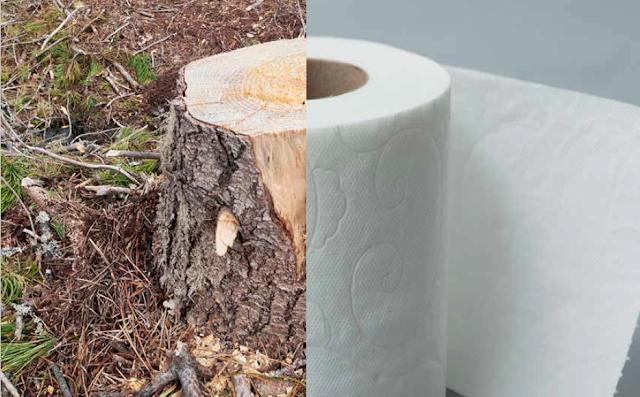Sustainable practices in paper recycling to avoid deforestation are not only reducing the need for virgin wood pulp but helping conserve forests for environmental safety and reduce greenhouse gas emissions.
Historical Overview of Paper Consumption
Historically paper was used in 25-200 AD in Ancient Egypt and China. The continuous advancements and improvements in procedures and machinery in paper manufacturing is progressing and we now have a blend of paper products in our daily use.
Raw materials used in Manufacturing Paper
The major raw materials for production of paper and paper based products are wood pulp, Recycled paper, Cotton, Rice, bamboo, Wheat straw, bagasse, Vegetable based Non Cellulose Fibers and certain chemicals and pigments.
All these components constitute a pulp for production of conventional paper we use in our writing and packaging etc. The sustainability of waste paper for producing recycled paper is significantly reducing environmental impact.
The pulp is mixed with different chemicals and papermaking agents to enhance the brightness, stability, strength, water or liquid resistance ability, and removing the impurities out of it. On the basis of their characteristics, the raw material used for paper industry can be classified into the different categories including pulp, sizing materials, mineral fillers, and coloring matters.
The high-quality paper is produced from higher strength and sturdy materials like cotton and hemp fibers. However, some mills use both recycled and virgin fiber to make paper.
Modern Papermaking Practices
Modern papermaking processes are not actually totally new rather there are improvements on prior ones. There are currently 187 paper mills in United States and therefore it is the second largest manufacturer of paper and paper based products with 66 million metric tons of paper and paper products annually.
How Recycled Paper is Disposed of
In emerging trends of environmental safety and sustainability, 100% recycled paper is now being produced mainly from waste paper. The paper scrap recycling industry collects, sorts, and processes the recovered fiber into specification grade products which are sold and transported to paper mills United Sates for production into new packaging, office paper, tissue, newsprint, and a multitude of other paper products.In the United States, nearly 57 paper mills rely on recovered fiber to make some or all of their products due in part to recovered paper’s significant cost and energy savings. In addition, the paper and fiber recovered in the United States is also exported to many countries adding to environmental safety and sustainability.
Fiber cannot, however, be recycled endlessly. It is scientifically accepted that a fiber can be used five to seven times before it becomes too short (because of repulping and other repeated handling) to be useable in new paper products. The pulp recovered from waste paper with long cellulose fibers (such as office paper) has the greatest flexibility for recycling as it can be used to produce new paper products.
Removing Containments from Old Paper to Make New Paper
Recovered paper with short cellulose fibers (such as newspaper paper waste) can only be recycled into other products that use short cellulose fibers. For this reason, recovered paper with long fibers is generally of higher value than recovered paper with short fiber.
The waste paper is combined with water in a large vessel called a pulper that acts like a blender to separate fibers in a paper sheet. The resultant slurry is then passed through screens and other separation processes to remove contaminants like ink, clays, dirt, plastic and metals.
The proportion of contaminants that are acceptable in the pulp depends upon the type of paper being produced. Deinking processes use special systems aided by soaps or surfactants to wash or float ink and other particles away from the fiber.
After removal of all these containments, the pulp is blended with virgin fiber through different processes to make new paper.
However, there are certain products in the market which are prepared entirely with the recycled paper like paper towels, toilet papers, Newspapers, paper grocery bags, cardboard boxes, envelopes, magazines and corrugated sheet cartons etc. Here, manufacturers are instructed to process their products, more specifically paper towels without chlorine to reduce the amount of chlorinated toxins released into the environment.
Impacts of Using Recycled Paper to Forests
The major benefit of using recycled paper is reducing the demand for virgin wood pulp, which is the primary source of raw material for paper production. Here are the few ways in which recycled paper helps protect forests:
- Less Tree Harvesting: By using recycled paper, we reduce the need to cut down trees for paper production. This helps preserve forests, including vital ecosystems that provide habitat for wildlife, support biodiversity and strengthen forest restoration.
- Habitat Protection: Forests are home to millions of plant and animal species, many of which are endangered. By decreasing the need for deforestation, recycled paper helps protect the biodiversity.
- Lower Carbon Footprint: The entire lifecycle of paper made from recycled materials generally has a lower carbon footprint compared to paper made from virgin wood pulp.
- Soil and Water Protection: Forests play a key role in regulating water cycles, preventing soil erosion, and maintaining watershed health. By reducing deforestation, recycled paper helps maintain the forest ecosystems that provide these essential services, benefiting agriculture, water quality, and local communities.
- Climate Control: Forests absorb carbon dioxide and produce atmospheric moisture and rainfall, which helps control temperature and regulate the climate.
Conclusion
Using recycled paper significantly benefits forests by reducing the demand for raw materials that lead to deforestation, habitat destruction, and biodiversity loss.
By conserving trees, promoting sustainable forest management, and mitigating climate change, recycled paper supports the long-term health of ecosystem. This, in turn, helps ensure that forests can continue to provide the essential services they offer, including carbon storage, water regulation, and habitat for wildlife.








Comments
Post a Comment